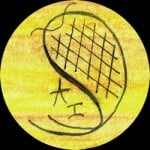Chopping vs. Drilling Mortise Holes
Welcome! / Forums / General Woodworking Discussions / Wood and Wood Preparation / Chopping vs. Drilling Mortise Holes
Tagged: chisel vs brace and bit, chopping mortises, Joinery, mortise
- This topic has 8 replies, 1 voice, and was last updated 1 month ago by
Charles Stanford.
-
AuthorPosts
-

It seems like every other woodworker that produces books/videos about hand-tool woodworking creates mortises by first boring a hole with a brace and bit and then chopping out the waste to square up the hole. I am definitely a Sellers “disciple”, but I do wonder if there is a reason not to do it that way. It looks so much easier, especially given how crooked and dirty the one practice mortise I’ve managed to chop through with a chisel turned out. Can someone set me straight?
 21 November 2014 at 11:39 pm #121326
21 November 2014 at 11:39 pm #121326Try it and see. I have done it once. I think P.S. uses that method for the mallet. I thought it was more trouble then its worth.
 22 November 2014 at 12:05 am #121327
22 November 2014 at 12:05 am #121327I’ve only used the boring method on the mallet I made. It makes sense for a deep through mortice. For the rest, I’ve found Paul’s method fast and easy, with no setting up depth stops etc.

I think it is down to someone’s opinion more than anything. Drilling out a hole and paring it straight is how you’d do a mortise with machinery, unless you use a plunge router or something else. I would guess then that most people writing on the internets would be from a machine-oriented background and boring with a hand drill or auger would be a logical step.
I find that it is quicker to just use a chisel for small mortises and for something larger you’d be better off with an auger and pare the hole square. It would be up to you do decide how large is too large for a chisel.
I did a search around since you posed the question and see that Paul uses an auger in the mallet episode. Also, he has a blog post about doing large mortises with an auger when making a door: https://paulsellers.com/2011/05/how-to-cut-large-mortise-holes-by-hand/
In this he says “I have never particularly liked the boring-holes-and-chiselling method for mortising”.
So, I think it is down to your opinion more than anything. Like sawing or paring tenons. Sometimes an auger would be handy, other times maybe not.
For large holes I find you can get more torque from an auger versus a battery drill. I can cut out a hole nice and slow with more control.
With regards to clean mortises, that comes with practice. I have made some ugly mortises, but I’m getting better.
 22 November 2014 at 3:29 am #121335
22 November 2014 at 3:29 am #121335Unless your are going to use a drill press, drilling multiple plumb and square holes with a brace and bit is far more difficult than chopping a plumb and square mortise. Generally the brace and bit method is reserved for large and deep mortises. Chopping is far more accurate and quick for most mortise work.
Mortising is a skill that is only developed through repetition. It’s not just whacking a chisel into the wood. The process is full of subtleties that can only be discovered though practice.
Get yourself a 2×4 and create several mortises using each method. That will tell you what you want to know quicker than anything else.
I just had to cut some fairly deep mortises into oak where the hole direction was from the outside of the tree toward the middle. I chopped the first one, like I usually do, but it was difficult. For the other three, I bored out the mortise first with a forstner bit on a drill press, and it went much faster and easier. I would say it just depends on preference. I usually just chop them as Paul would in most situations.
 18 October 2018 at 4:31 pm #552772
18 October 2018 at 4:31 pm #552772I actually enjoy the process of chopping mortises. I have a “project” coming up where I’m making a second quilt ladder for my sister-in-law. This isn’t a project I’m doing for my pleasure, it is merely something I’ve been asked to do. My goal on this is to knock it out as quickly as possible so I can move on to things I would prefer to do.
In this instance, I’ll forego sawing by hand and planing everything square and chopping out mortises by hand. I’m going to use as much power equipment as I can to get this done fast. I am also not going to go with my preferred shellac and paste wax finish, buffed with 0000 steel wool. I’ll probably just do a coat or two of water-based poly.
My wife treasures the things I make her and it is a joy for me to make them, by hand, the more tedious way. I love my sister-in-law, but her appreciation for what I make is more of a “oh, hey, that’s cool – make me one too” – so quicker is the route I’m going. Forstner bits and drill press at the ready.
I think there’s a balance to be kept. Time and effort vs. outcome.
The Paul Sellers method for removing dovetails is to pare/chop. He states that he doesn’t like to use a coping saw, as it’s a quick method, but not a pure/traditional method. This seems the same for chopping mortises, vs. drilling to remove waste (even more so, since it incorporates power machines.)
But … to each their own. I use purely hand powered tools for just about all of my working. — I use a cordless drill for my hinge work, or other work that requires it. — Partly because I don’t have a good hand brace and bit set. I’m not ashamed of it.
If I was tasked with making a large mortise, I’d certainly be tempted to grab the drill.
24 March 2024 at 11:29 am #834206Drilling and paring is exactly what a mortise machine does, it just does it in one step, with power (obviously).
I started drilling and paring with all hand tools when living on a street with houses set close together and everybody around us (and we) had babies.
Like anything in woodworking it’s what you get used to doing. But the thing is this: you can do it at midnight and you won’t disturb a soul which could be important if you have to fit your woodworking around other work and family.
-
AuthorPosts
- You must be logged in to reply to this topic.
